Overview
The clipboard widget is a compact application designed for Windows users to easily access and manage their copied images, links, and text. This case study outlines the design process and key decisions made to create an efficient and user-friendly widget. The goals included providing convenience, optimizing limited space, and aligning with the visual language of newer widgets. Challenges included balancing functionality with design and addressing technical limitations. The final design exceeded expectations, enhancing user productivity and satisfaction.
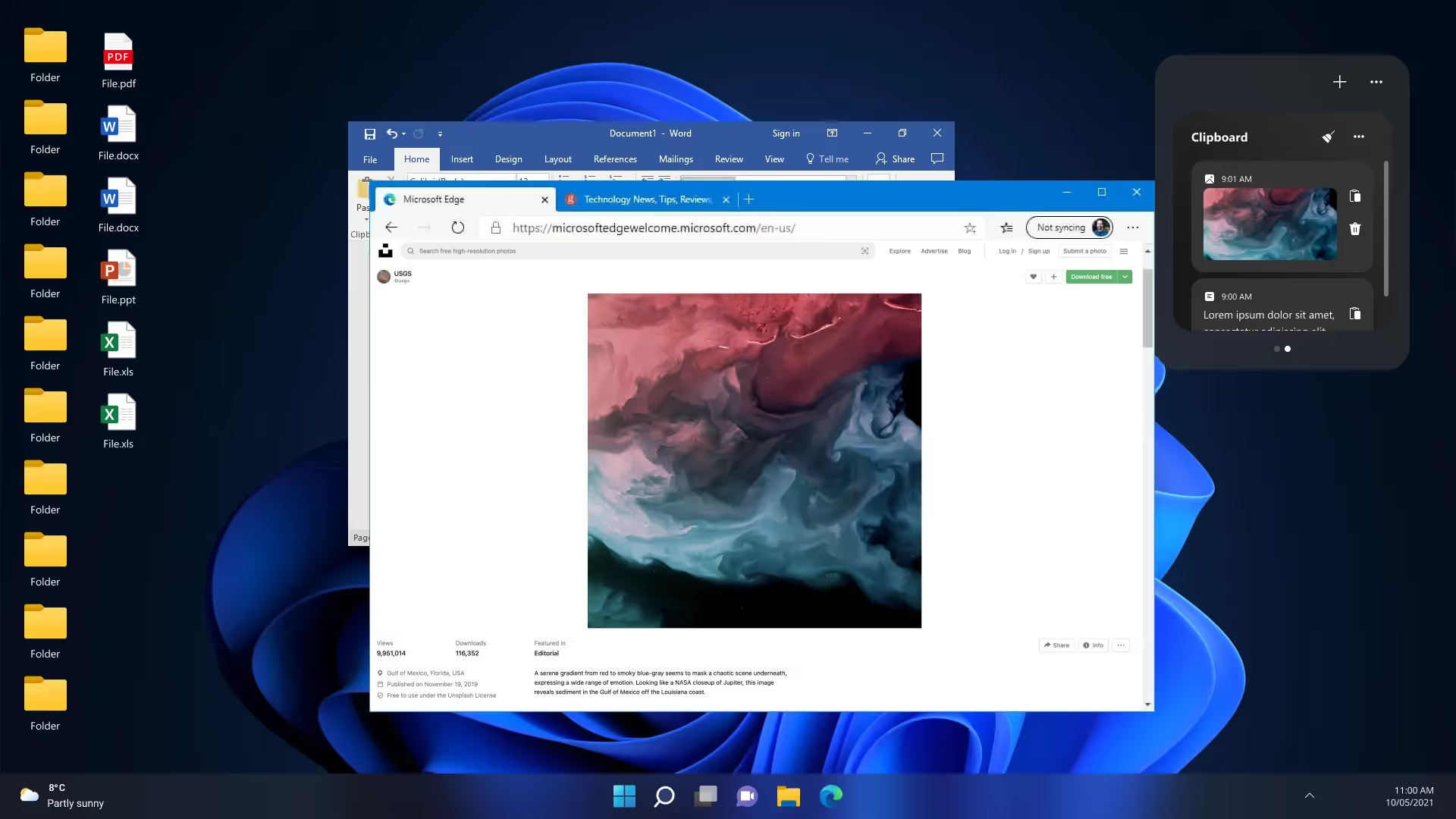
Windows users frequently use copy and paste functionalities but often overwrite their copied items before they use it.
Context
There was a clipboard widget already available to users. It had some of the functionalities needed for the new version. But it was underused and not in line with new widgets being implemented.
A number of new widgets were being developed following a new design direction and language.
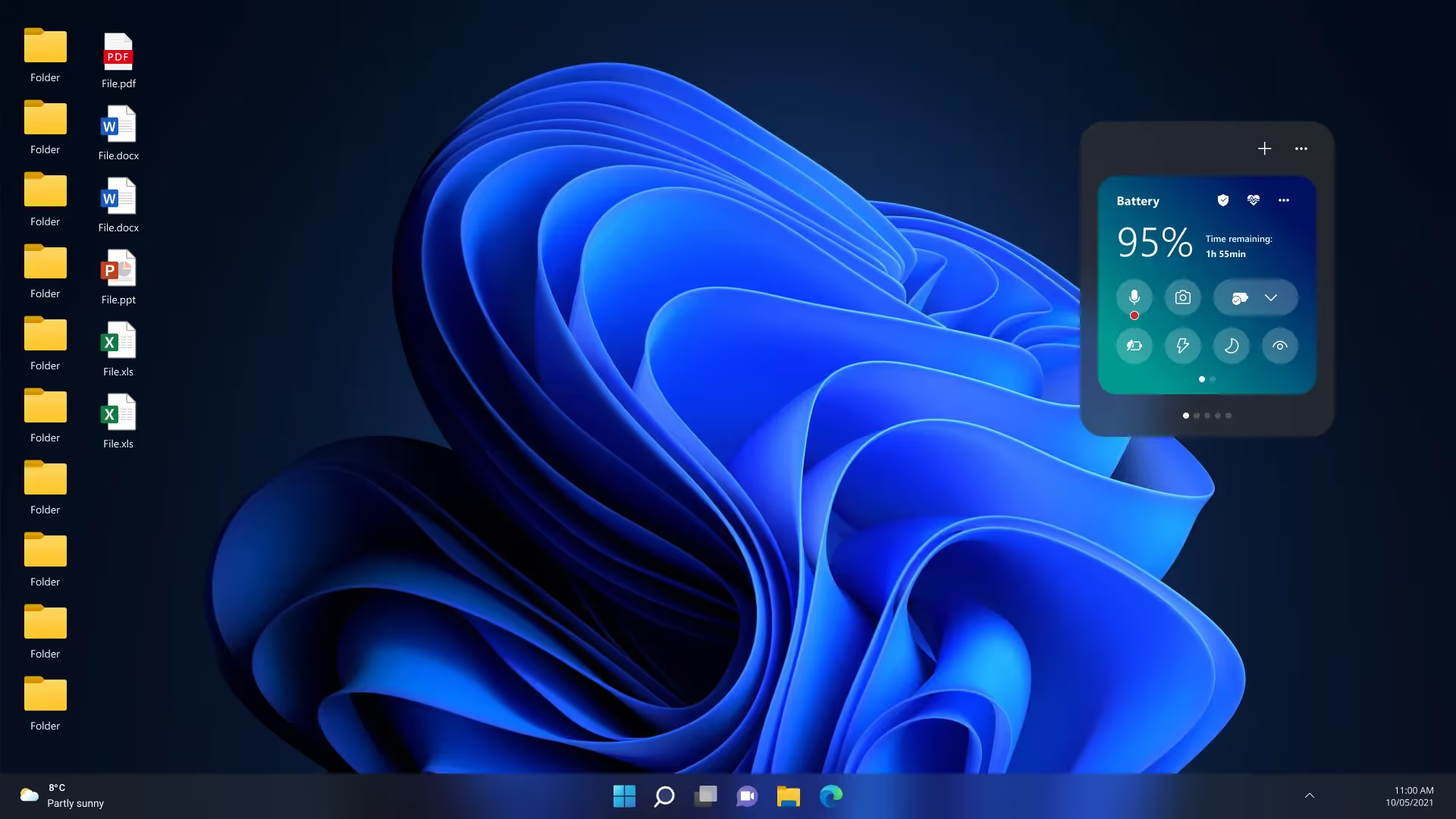
Goals
- Provide a convenient tool for users to quickly access their copied items.
- Make the best use of limited screen real estate.
- Provide a basis from which future features can be easily implemented.
- Align with the visual language of newer widgets.
Challenges
- Limited space available for the widget design.
- Balancing functionality with design in limited space scenarios.
- Technical limitations such as file size and format.
My contribution
Leading the design an efficient and user-friendly interface for the clipboard widget that met the client's requirements and aligned with the visual language of newer widgets. Collaborating and aligning with the other designers on the team.
Project
Small application designed for Windows users that allows them to keep a record of their copied images, links, and text. It offers features such as history, copy, paste, delete, and pin.
Solutions
Simple design that allows for future feature expansion without friction.
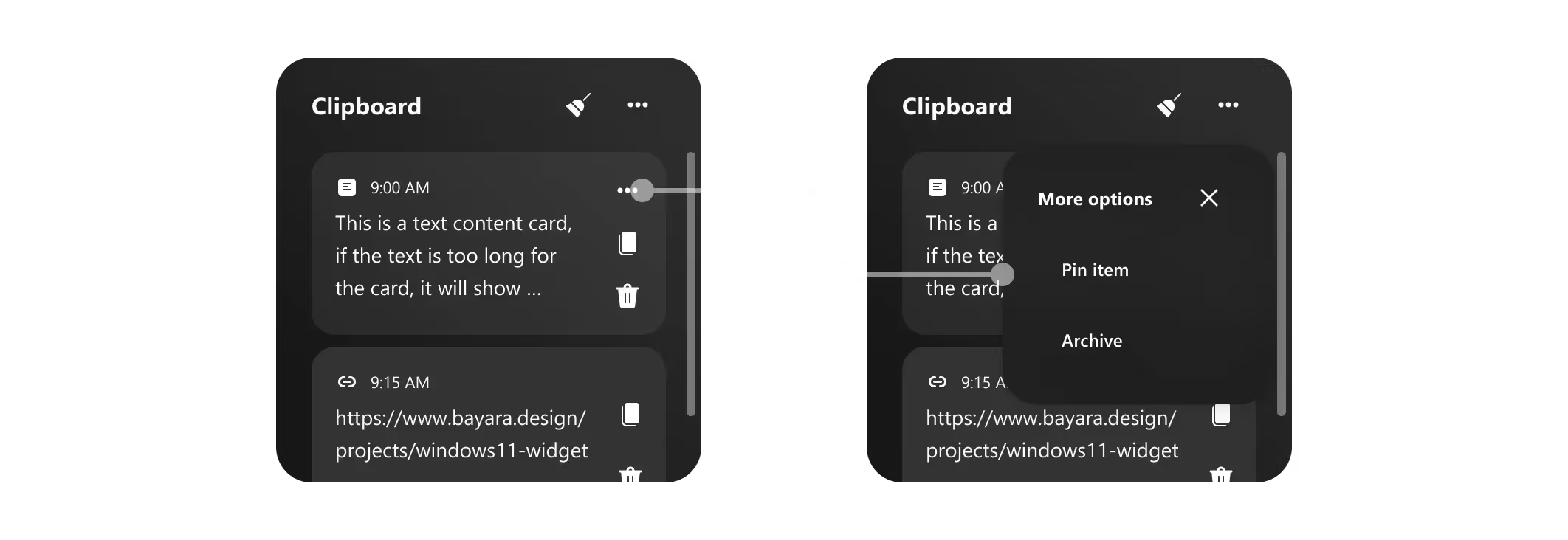
Implemented a minimalistic interface that made the best use of limited space and prioritized recency of use for item display.

Differentiation between different types of items and solve accessibility problems. Utilized Microsoft's Fluent icons to maintain consistency and familiarity for the users.

Designed toast notifications for informative and action-oriented messages, including an "undo" feature that was well-received by users.
The widget was fully adapted to Windows' accessible color themes.
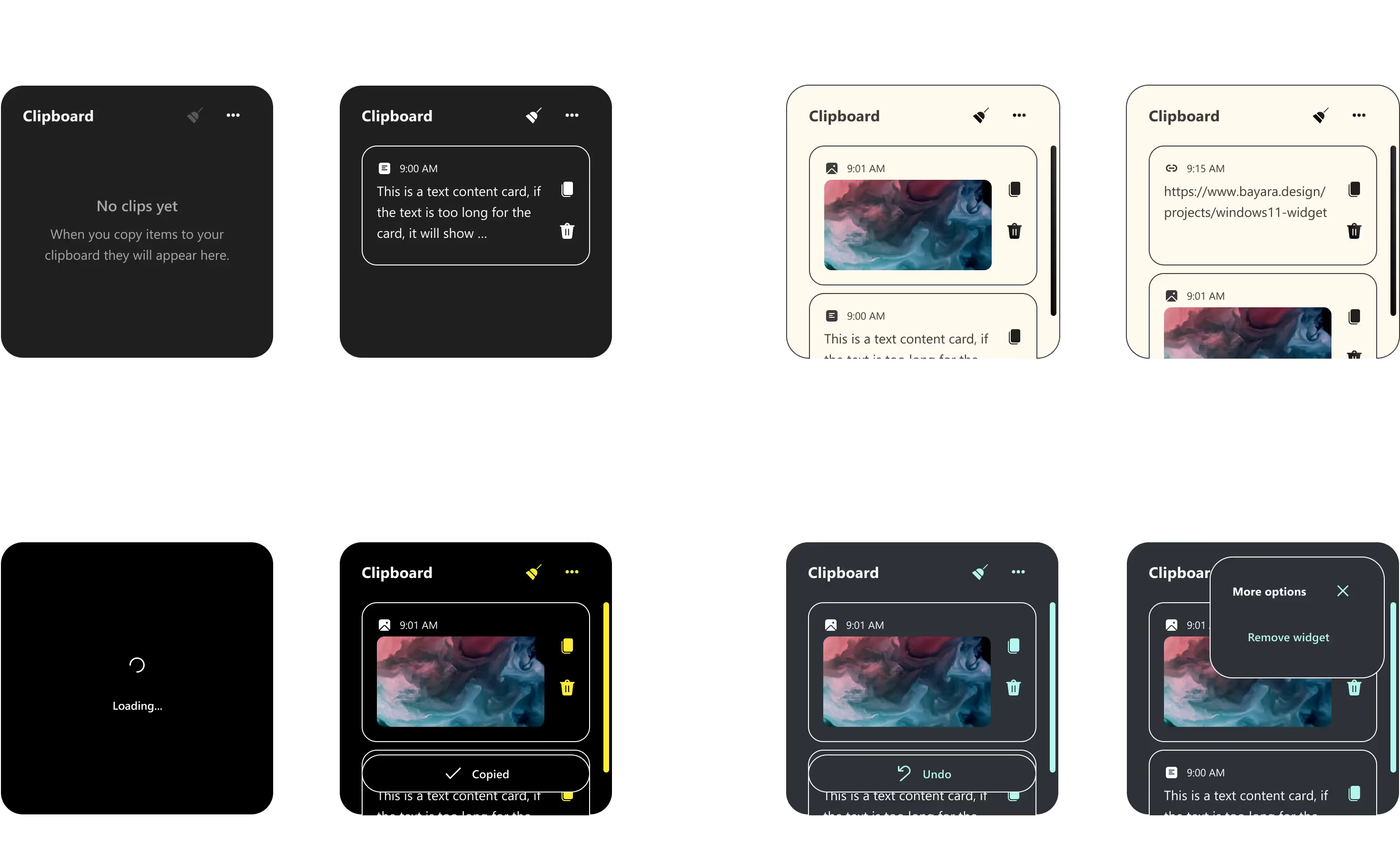
Process
How I worked
Emphasized user needs, optimized space, aligned with visual language, and fostered collaboration, resulting in an efficient and user-friendly clipboard widget. Efficient space utilization was a key focus, balancing information density and user experience. Collaboration played a vital role, seeking input from the design team through meetings and communication.
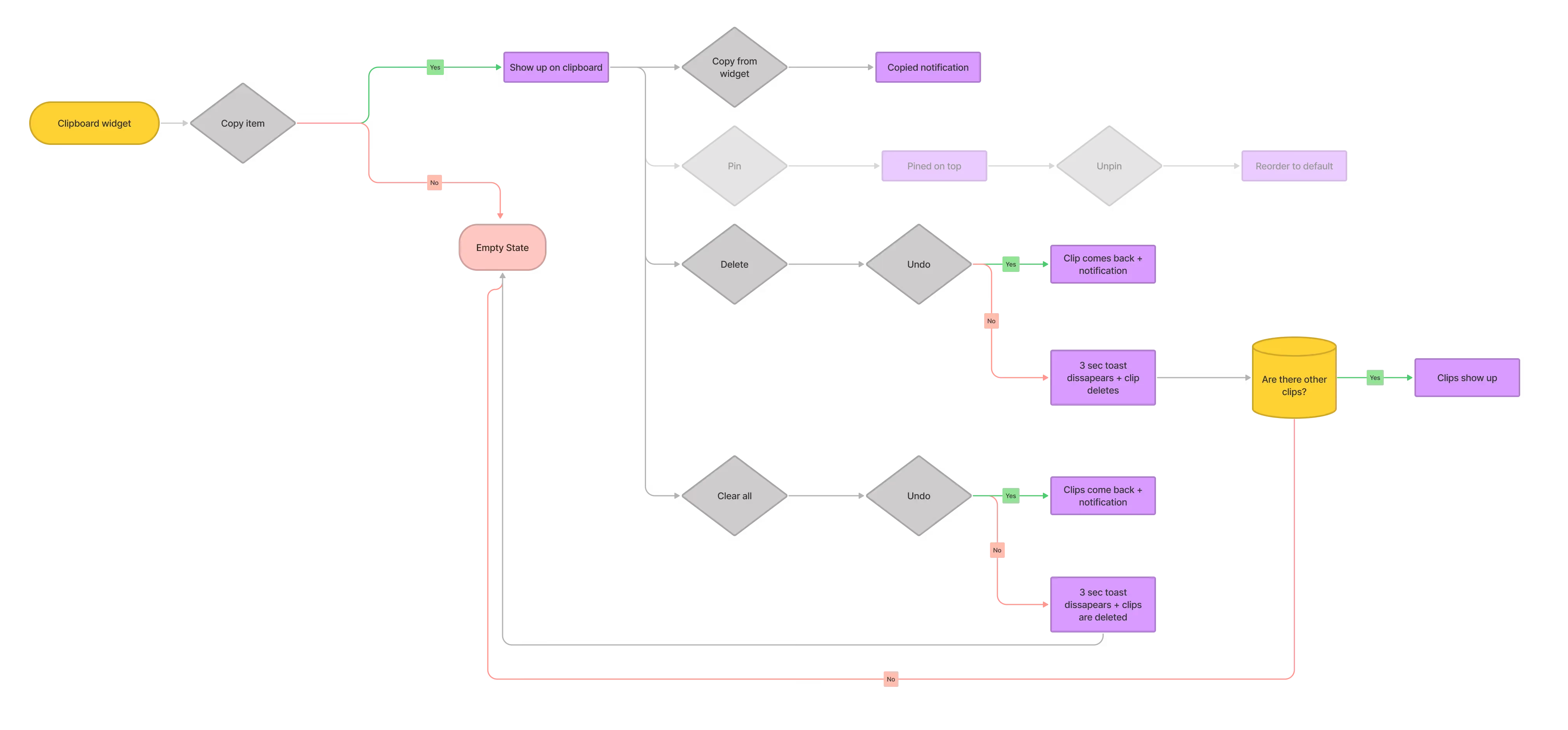
Many versions of the design were experimented and discussed. This allowed the team better plan for th future of the widget, by thinking of possible roadblocks imposed by the ideas.

How the Team Collaborated
Held regular design team meetings to discuss progress, share feedback, and address concerns.
Collaborated with the development team to ensure everything proposed would be possible and to plan for future iterations.
Leveraged collaboration tools to facilitate asynchronous communication and gather feedback from all team members. The team had discussions directly on Figma during the design process.
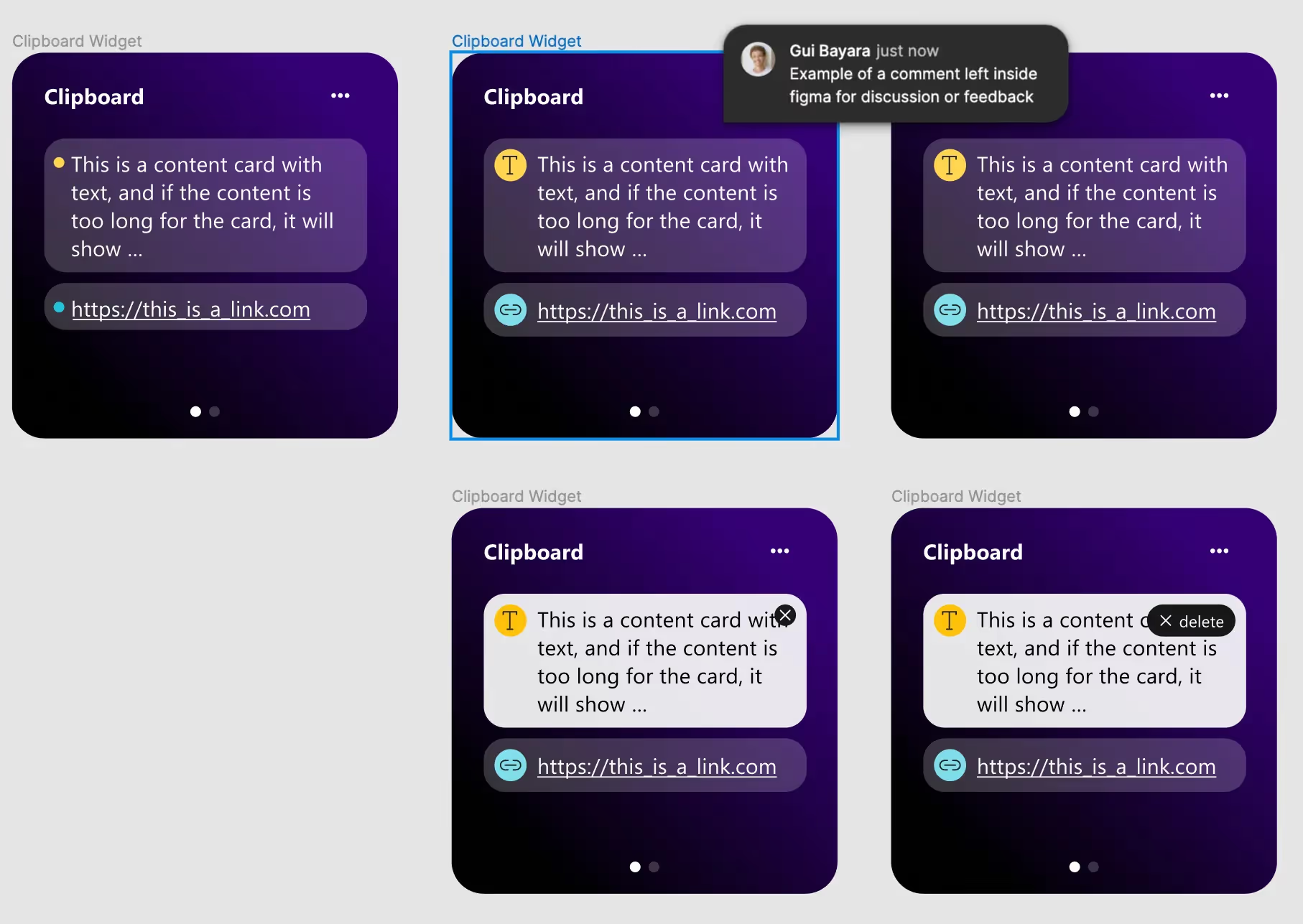
Key decisions
The decision to collaborate closely with the development team throughout the design process, ensuring technical feasibility and implementation within the given timeframe.
The decision to implement toast notifications for informative and actionable messages, providing users with timely feedback. The inclusion of an "undo" feature in the toast notifications was particularly well-received by users.
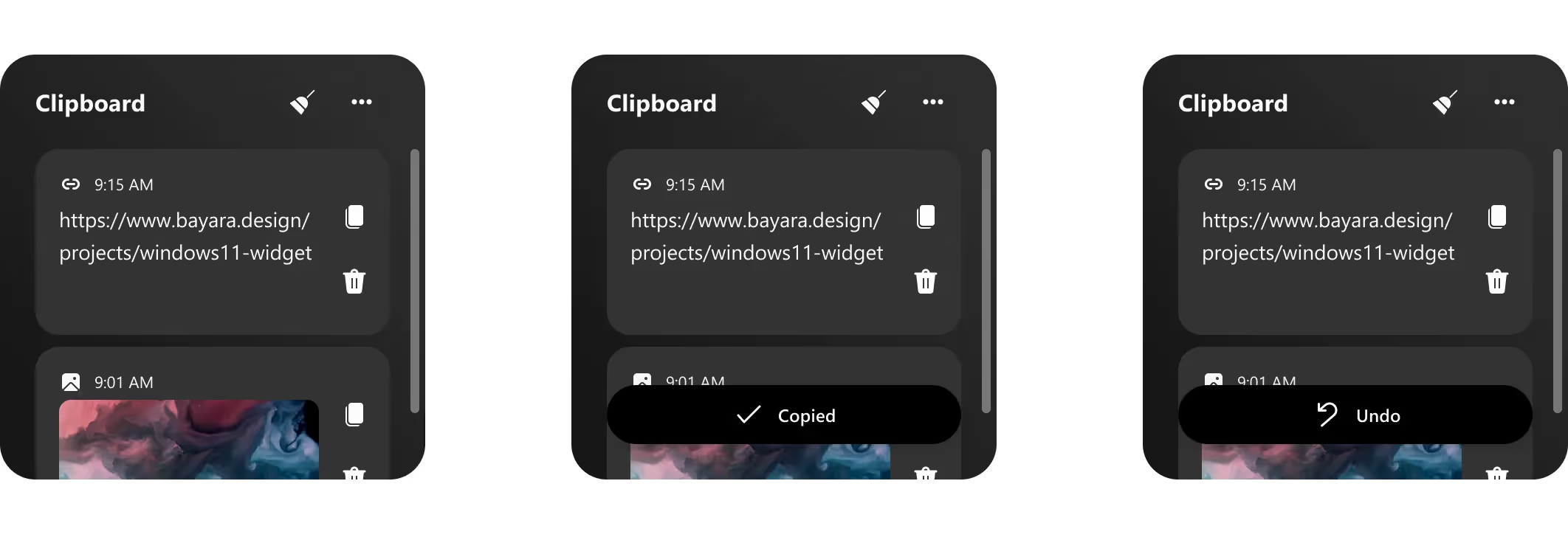
Results
Final designs
The final design of the clipboard widget was minimalistic and aligned with the visual language of newer widgets. It effectively displayed recently copied items, differentiated between types using small icons, and included toast notifications for informative and actionable messages.

Impact
The clipboard widget improved users' efficiency in accessing and managing their copied items. The design solutions, such as the use of icons and toast notifications, were well-received by users. The widget exceeded expectations by providing a user-friendly and space-efficient solution, although some technical limitations remained for future improvements.



.svg)